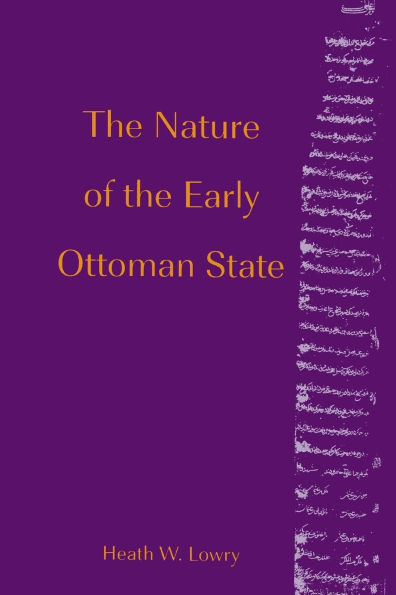Drawing on surviving documents from the fourteenth and fifteenth centuries, The Nature of the Early Ottoman State provides a revisionist approach to the study of the formative years of the Ottoman Empire. Challenging the predominant view that a desire to spread Islam accounted for Ottoman success during the fourteenth-century advance into Southeastern Europe, Lowry argues that the primary motivation was a desire for booty and slaves. The early Ottomans were a plundering confederacy, open to anyone (Muslim or Christian) who could meaningfully contribute to this goal. It was this lack of a strict religious orthodoxy, and a willingness to preserve local customs and practices, that allowed the Ottomans to gain and maintain support. Later accounts were written to buttress what had become the self-image of the dynasty following its incorporation of the heartland of the Islamic world in the sixteenth century.
Drawing on surviving documents from the fourteenth and fifteenth centuries, The Nature of the Early Ottoman State provides a revisionist approach to the study of the formative years of the Ottoman Empire. Challenging the predominant view that a desire to spread Islam accounted for Ottoman success during the fourteenth-century advance into Southeastern Europe, Lowry argues that the primary motivation was a desire for booty and slaves. The early Ottomans were a plundering confederacy, open to anyone (Muslim or Christian) who could meaningfully contribute to this goal. It was this lack of a strict religious orthodoxy, and a willingness to preserve local customs and practices, that allowed the Ottomans to gain and maintain support. Later accounts were written to buttress what had become the self-image of the dynasty following its incorporation of the heartland of the Islamic world in the sixteenth century.

The Nature of the Early Ottoman State / Edition 1
210
The Nature of the Early Ottoman State / Edition 1
210Paperback(New Edition)

Product Details
| ISBN-13: | 9780791456361 |
|---|---|
| Publisher: | State University of New York Press |
| Publication date: | 03/17/2003 |
| Series: | SUNY series in the Social and Economic History of the Middle East |
| Edition description: | New Edition |
| Pages: | 210 |
| Product dimensions: | 6.00(w) x 9.00(h) x 1.00(d) |
| Age Range: | 18 Years |
